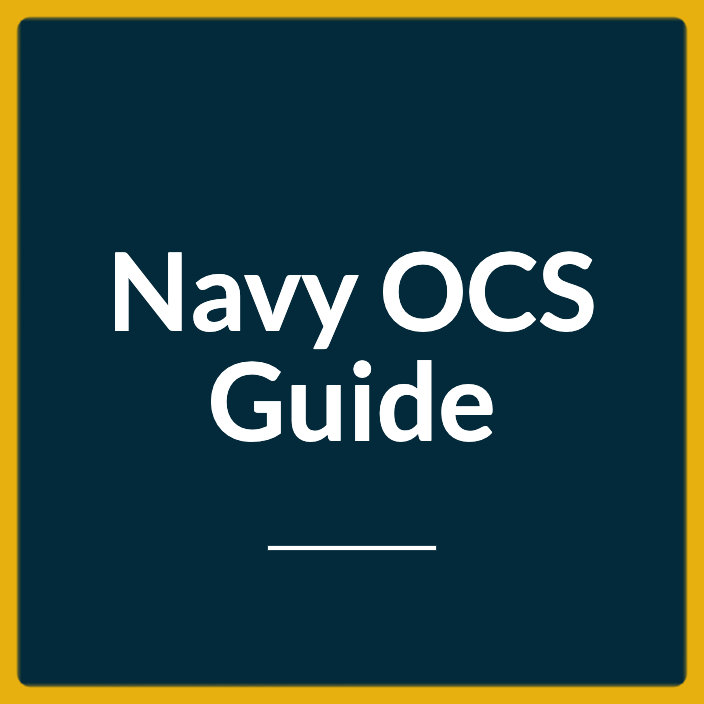Last Updated on August 30, 2023
In today’s complex and unpredictable world, the military requires strong leadership. A career as a naval officer may provide a challenging and fulfilling opportunity.
Joining the Navy as an officer offers many opportunities for personal and professional development, the chance to serve one’s country, and make a significant impact on the world.

Here are 11 interesting reasons to consider a career as a naval officer.
Leadership Experience
As a naval officer, leadership opportunities will be plentiful in the Navy. Early on, managing and supervising a team of sailors will be your responsibility, which will require strong analytical and interpersonal skills to resolve issues and make informed decisions.
As one progresses in their naval career, they are assigned more important duties that contribute to the development of their leadership abilities. The acquisition of experience in managing intricate tasks will aid in the improvement of competence in leadership.
A leader needs empathy, dependability, and sacrifice. Empathy can build trust and support from team members. Dependability is crucial, as your crew must rely on your leadership. Sacrifice is also essential, as leaders must prioritize their team’s needs over their own. Successful leaders understand this.
A career as a naval officer provides ample opportunities to cultivate and exhibit leadership skills. As you gain experience, you will be entrusted with greater responsibilities, which will further enhance your leadership capabilities. Essential attributes for effective leadership in the Navy include empathy, dependability, and sacrifice.
Opportunities for Promotion
One advantage of being a U.S. Naval officer is the availability of promotion opportunities. Naval officers are encouraged to pursue career advancement and are given a clear path to achieving promotions.
The promotion process for officers follows a set of standards and requirements, and is a competitive endeavor that requires hard work to show worthiness for advancement.
Annual performance evaluations are used to evaluate the leadership abilities, technical skills, and overall performance of officers. These evaluations play a crucial role in determining an officer’s suitability for promotion. Officers who meet or exceed the expectations outlined in their evaluations may be recommended for advanced training or promotion.
The Navy provides officers with opportunities for career advancement through specialized training courses and programs. Completion of these programs can lead to advanced technical certifications and eligibility for promotion.
Naval officers have access to various promotions, including advancement to higher ranks, selection board promotions, temporary promotions, and battlefield promotions during wartime. These promotions are crucial for career advancement and enable officers to assume greater responsibilities.
Promotion opportunities are regularly available for each job specialty, and their purpose is to assess an officer’s competence in their area of expertise. The exam outcomes are used to determine the qualification for promotion.
The U.S. Navy provides opportunities for career advancement through a clear path for promotion based on dedication, performance on evaluations, and the pursuit of advanced training and education.
Free Healthcare
Naval officers receive free healthcare that is comprehensive and covers all medical needs, ensuring their healthcare needs are met during their military service.
Naval officers have access to military medical facilities that offer a range of medical services, including hospital visits, routine check-ups, preventive care, and physicals. These facilities are manned by skilled medical professionals and outfitted with innovative medical equipment to guarantee the highest quality care. Officers can take advantage of the free healthcare benefit.
Naval officers have the option to receive healthcare from civilian providers with a small co-pay, besides military medical facilities. This provides officers with more flexibility in choosing their healthcare providers.
Naval officers benefit from free healthcare. The benefit provides access to quality medical care with no cost. It also helps to relieve the financial burden associated with healthcare expenses. With this benefit, Naval officers can be assured that their medical needs are covered.
Free Housing
Joining the U.S. Navy as an officer comes with the benefit of free housing for service members and their families. The Navy provides a range of accommodations to suit the needs of both junior enlisted sailors and senior sailors.
Junior enlisted sailors are provided with shared barracks-style accommodations, which can vary in quality based on the location and budget of the base.
Senior sailors are entitled to free on-base housing or a housing allowance, which is calculated based on the cost of living in the area and referred to as Basic Allowance for Housing (BAH).
BAH rates are determined based on the cost of living in the area and the increase for service members with dependents. The Department of Defense offers a BAH calculator to help estimate the amount based on the service member’s grade, dependency status, and location.
While the Navy may not always be able to fulfill sailors’ assignment preferences, the Exceptional Family Member Program offers accommodations for those with specific family needs.
The Navy offers a housing benefit that provides affordable and comfortable accommodation for service members and their families. This benefit includes free housing or a housing allowance, which allows sailors to concentrate on their duties without worrying about living expenses.
Paid Vacation
Naval officers receive paid leave, allowing them to take time off without financial concerns. In contrast to civilian jobs with restricted vacation time, naval officers are given 30 paid vacation days annually. That is a whole month of time off per year, plus unlimited sick leave.
Naval officers are given the opportunity to take time off before and after deployments, as well as during holidays and summer. This allows for quality family time and a break from their demanding duties.
Sailors often take vacation time when transferring commands, which may require a move across the country or to different continents. This can be arduous for military families. A timely vacation can offer a valuable respite and aid in their change to new surroundings.
Paid vacation is a significant benefit for naval officers as it allows them to recharge and spend quality time with their loved ones.
Pay for Graduate Education
Naval officers have access to educational opportunities and support from the Navy to pursue advanced degrees in their field, recognizing the value of education.
The Navy offers financial assistance to officers pursuing graduate education, which encompasses tuition fees, housing allowances, living expenses, and other related expenses.
Besides providing financial support, the Navy also offers the GI Bill to its officers. After three years of active service, officers are eligible to use the GI Bill to cover tuition and housing costs at any public institution in the country, which can be helpful for those seeking advanced degrees.
Military training can provide credits towards advanced education, with the Navy providing specific programs for officers who hold an undergraduate degree in their field.
Certain professions may require a postgraduate degree in progression. In such situations, the Navy offers officers the chance to pursue advanced degrees in their area, with backing and educational help available throughout the journey.
Individuals interested in pursuing graduate education while serving as a naval officer have access to many options and support. The Navy understands the importance of education and is dedicated to assisting officers in obtaining the education and training for success in their career. Joining the Navy may be an ideal choice for those who are motivated to further their education.
Retirement Benefits
Becoming a U.S. naval officer comes with retirement benefits after completing a minimum of 20 years of active service, which includes lifetime healthcare benefits and retirement pay.
The retirement pay for officers is calculated based on their rank, length of service, and base pay. If a naval officer has served for 20 years and is ranked as O-5 (Commander), they will receive about 50% of their final base pay as retirement pay. Officers who serve for 30 years or more will receive 75% of their final base pay as retirement pay.
Military personnel are eligible to receive healthcare benefits for life through Tricare, which is a comprehensive healthcare program that covers medical and dental care, as well as prescription drug coverage. These benefits are besides retirement pay.
The Navy has implemented the Blended Retirement System (BRS), which includes a Thrift Savings Plan (TSP) similar to a civilian 401(k) and officer contribution matching up to 5% of their base pay.
The Navy’s retirement benefits are appealing to those seeking stable finances and healthcare coverage in the long run. The BRS and its contribution matching program offer officers additional options for securing their financial future beyond their active service years.
Physical Fitness
Meeting the Navy’s physical fitness standards is a requirement for becoming a U.S. naval officer, as it is necessary for the demands of the job and for maintaining health.
As part of its protocol, the Navy mandates officers take Physical Readiness Tests twice a year. These tests comprise sit-ups, pushups, sit-and-reach, and cardio exercises. The Navy uses these tests as a measure of officers’ physical fitness levels, ensuring that they meet the minimum requirements necessary for effective duty performance.
The Navy offers physical fitness leaders to assist sailors in meeting their fitness requirements and goals.
Sailors can access excellent sports and fitness facilities through the Navy, including Exercise Joint Warrior – the largest military exercise in Europe involving various global forces.
Naval officers must meet height and weight requirements, as well as adhere to grooming standards, to meet physical fitness standards enforced by the Navy for safety and performance reasons.
Physical fitness is an important aspect of being a U.S. naval officer, and the Navy offers its officers the resources and support to maintain their physical health and well-being.
Tax-Free Shopping
As a U.S. naval officer, tax-free shopping is a perk that extends to you and your family. The Navy Exchange and Commissary are the primary destinations that provide this benefit to military personnel.
The Navy Exchange is a retail store chain that offers goods and services to active duty and retired members of the military, National Guard, and their families. Electronics, clothing, and household goods are among the items available at a discount, without taxes or markups, making it an ideal place to save money on both essential and luxury items.
The Commissary is a grocery store chain that supplies food and household items to military members and their families. It offers a diverse selection of goods, including fresh produce, meat, and dairy products, at a discounted price because of government subsidies. This allows for stable and lower prices compared to civilian grocery stores.
Both the Navy Exchange and Commissary provide exclusive military discounts besides discounted prices. By utilizing these deals, you can save money on a wide range of items. Tax-free shopping allows for additional savings of up to 10% on every purchase.
Tax-free shopping provides a financial benefit by helping families stick to their budgets. Given the increasing cost of living, tax-free shopping can lead to significant savings and greater financial flexibility.
First-time customers at select Navy Exchange locations should keep an eye out for the “15% First-Time Customer Discount,” available to new naval officers and their families. This discount provides extra savings on already marked down items.
Tax-free shopping is a beneficial option for naval officers and their families. Use the shopping opportunities provided at the Navy Exchange and Commissary to save money, adhere to a budget, and receive additional discounts as a military member.
Post-Service Career Opportunities
Becoming a U.S. Naval Officer can lead to a promising career with many opportunities available after completing service, including both government and civilian positions.
Navy Officers have the option to pursue career opportunities in the government or private sector, using their specialized training and skills gained during service. The leadership experience gained in the Navy can be valuable for management and leadership roles in a variety of industries.
Some Navy Officers choose to work in government agencies that focus on national security and foreign policy. Their military experience gives them a valuable perspective that can be beneficial to these organizations.
One potential benefit of military service is the opportunity to gain specialized training and education that can apply to a career in a specific field. For instance, a naval aviator who gains significant flight experience and technical knowledge may opt to pursue a career as a commercial airline pilot. Likewise, a healthcare professional serving in the Navy may transition to a medical role post-service.
Former Navy Officers possess valuable skills and experience that make them attractive to both government and private sectors. They have strong leadership abilities, adaptability, and problem-solving skills that can apply to any industry for a successful career.
Becoming a Navy Officer presents a chance to establish a fulfilling career, as the specialized skills and training gained during service provide various career prospects both inside and outside the military. The benefits of higher pay, job security after college, and increased opportunities for promotion and training make joining the military as a commissioned officer a prudent decision for individuals beginning their career path.
Travel the World
One advantage of becoming a U.S. Naval Officer is the chance to travel internationally during deployments, providing sailors with exposure to diverse cultures and perspectives.
During deployments, port visits allow sailors to experience various countries and take part in cultural activities. These visits offer opportunities for sailors to take city tours, try local foods, and engage in other cultural experiences to broaden their understanding of the world. Certain port visits may also include opportunities for sailors to take part in charitable community service projects, which can allow them to connect with residents and make a positive impact in the communities they visit.
Navy deployments visit various ports and countries worldwide, including the Mediterranean Sea, Asia-Pacific, and Middle East. Some popular ports are Yokosuka, Japan; Rota, Spain; Pearl Harbor, Hawaii; Souda Bay, Crete, and Singapore. Sailors may also visit exotic locales like Bali, Dubai, and the Maldives during their deployment.
Navy Officers who travel the world have the chance to encounter diverse cultures, food, and experiences, which can broaden their perspective and lead to a more global worldview. These experiences gained during deployment can also be beneficial in future careers by providing knowledge and cultural understanding.
Traveling the world as a Navy Officer offers the chance to explore diverse cultures and gain a broader perspective. Deployment experiences can have a significant impact on the careers and personal lives of Navy Officers.


